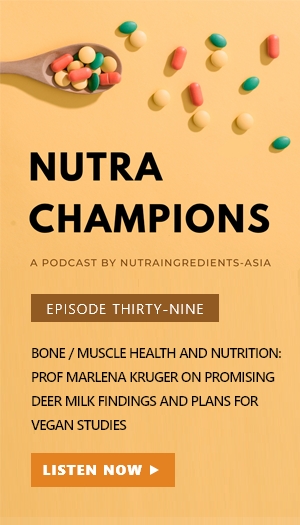Nestle targets mitochondria to support healthy aging

Philipp Gut, Department manager at Nestle Research, spoke at Vitafoods last month, revealing the growing proportions of elderly populations and a current obesity prevalence of 650 million adults globally; a combination he said will accelerate age-related declined at a global scale.
He described the firm's recent ‘Celltrient’ innovation, following the identification of the importance of the mitochondria in the aging process. The product contains the amino acids N-acetylcysteine (NAC) & Glycine (Gly), with studies conducted by the team noting restored mitochondrial function following its consumption within an older population.
Following its noted ability to replenish glycine levels within this older age group, Gutt hypothesised that the mitochondria uses glycine for energy with age, and thus, supplementation with the amino acid may slow this cellular aging pathway.
The future for public health
Gut drew attention to what he argued as being the most important future challenge of public health: “Looking forward to 2050, we’re going into a demographic shift due to populations shrinking in some countries, mainly in Japan and China. Then we will have ratios of those over 60 to under 60, of 1:2.
“What we didn’t manage to do with public health systems is reduce the number of years with disease. It’s a huge problem. It’s driving the contribution of healthcare, relative to the GDP, into unsustainable ranges.”
He emphasised how there needs to be a shift from the ‘reactive’ mindset to a proactive and preventative approach to health management by the industry; one which is being increasingly adopted by consumers. He explained that the healthy aging category has grown to encompass a wider age-range and demographic, with people looking to take steps towards healthy aging at an earlier stage in life.
NutraIngredients Europe will host its newly branded Active Nutrition Summit in Amsterdam from October 9-11.
An evolution of the brand's prominent annual Sports & Active Nutrition Summit, this year’s event will provide delegates with insights into the increasingly holistic and mass market view of sports nutrition, from some of the leading names in the industry.
Content pillars will cover all the hottest topics in the industry today, including: cognitive health, women’s health, life-stages nutrition, and personalisation.
Research
Gut spotlighted the current areas of focus at Nestle Research, including healthy aging and the associated cellular pathways involved.
He highlighted a vital cellular aging process is the functional decline of the mitochondria. This occurrence can increase the quantities of free radicals produced, resulting in further damage to cells. The outcomes of low-grade inflammation and a loss of metabolic control are noted to be the systematic root causes of aging.
Gut describes the potential solution, Celltrient, recently developed at Nestle: “We launched a new product which aimed to protect the body against oxidative stress. We combined a high dosage of the amino acids NAC and Gly, as they are the two building blocks of glutathione, which is the main non-molecular antioxidant in the cells.”
Due to the apparent lack of research utilising a healthy cohort to assess the effects of the amino acids against oxidative stress, Gut described the resultant trial conducted at Nestle utilising healthy older adults aged 60-85 years. The study demonstrated significantly lower levels of glutathione-based antioxidant defence present in this population.
In addition, it was noted that the older population had a reduced level of glycine in the blood when compared to the 20–40-year-olds. However, following two-weeks of supplementation with 3.6g per day of NAC and Gly, it was observed that glycine levels were replenished; a finding of significance due to the amino acid’s vital role for the formation of collagen. Furthermore, these glycine levels were noted to be inversely correlated with insulin resistance, whilst further research had established its association with cardiometabolic disease.
Recent innovation
Despite these findings, Gut highlighted the importance of having the correct dietary context for a supplement to work effectively.
“I strongly believe there is no golden nutraceutical to solve all our problems. We are trying to provide nutrition recommendations in the context of diet, making use of digital services and the fact we have 6 to 7 billion cell phones in the world. So, in this way, we can bring a nutritionist to everyone.”
He highlighted a 10-year project in collaboration with Samsung to develop a machine-learning meal plan generator, which involved the curation of a large database containing 30 million datapoints utilising 20,000 ingredients to form 180,000 recipes.
Each ingredient is assigned a food attribute describing allergens and dietary restrictions, enabling for the automated personalisation of diet plans tailored for different health requirements using the MyMenuIQ platform. Resultant recipes are provided with a score of nutritional balance.











